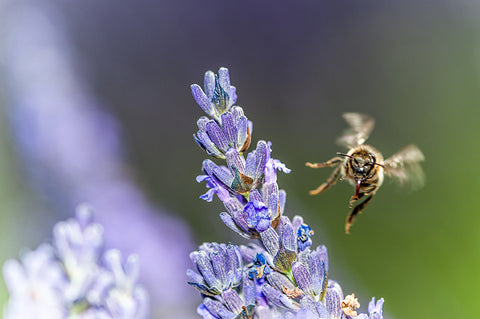The Powerful Potential of Pink Grapefruit

CITRUS PARADISI (PINK GRAPEFRUIT) ESSENTIAL OIL:
I’m talking about the pure essential oil, undiluted and unadulterated. This particular essential oil has many well proven beneficial and healing properties not the least of which includes animal and human studies showing its potential to prevent several types of cancer. In this article I present some of the most compelling research available including well-controlled studies as well as anecdotal evidence and information from some of the more reliable aromatherapy texts on the market. I purposefully avoided reading or considering information listed on the various aromatherapy websites. Some of them have very good, accurate and researched information. However, many of them are simply copied and pasted from either aromatherapy texts or other websites throughout the Internet, which simply leads to confusion and contradiction.
Citrus paradisi is known to be native to Asia and the West Indies however there are many different cultivars being developed and grown in other countries including the USA and Israel. From the information I read, the grapefruit is a recent hybrid. The essential oil is obtained from the cold-pressed peel.
WHY USE THE ESSENTIAL OIL?:
Kurt Schnaubelt, a well-known authority and author on the practice of aromatherapy and the use of pure essential oils said in a brochure for a 2009 conference in San Francisco: "The idea of dominating nature with chemicals and drugs is losing some of its luster. In aromatherapy this is reflected by an increase in research and empirical knowledge about essential oils in the context of serious disease. It is also reflected in conventional medicine. As pharmacology has been reduced to an adjunct of the corporate profit motive; biology is moving center stage."
The therapeutic value of an individual essential oil is related to its composition, which represents a complex make-up of many chemical components each with different biological activities. These varied compositions show wide variations that depend on their source. However, that being said, much of the research available to us today is being done with isolated components of individual essential oils. The influence of trace components on the therapeutic effect of essential oils has not been studied sufficiently. It is believed that these minor components probably contribute significantly to not just the odor of the oil but to the combined synergistic effect of all the components in order to appreciate the full healing potential of any given oil. In fact, grapefruit oil supposedly receives its olfactory character almost entirely from its minor components. I’ll first give you a short overview of what the popular aromatherapy texts say, and then I will delineate some of the current research available concerning this essential oil and/or constituent.
AROMATHERAPY BOOKS:
Out of all the texts most of them agree that grapefruit essential oil has the following benefits and properties:
Cleansing, detoxifying, energizing, uplifting, stimulates the lymphatic system, increases circulation, stimulates liver and gallbladder function, mental stimulant, antidepressant, useful as a room deodorizer, antiseptic, antiviral, diuretic, anti-cellulite, astringent, immune stimulant, tones the skin and tissues. As with all pure essential oils, and unlike pharmaceutical drugs, one oil can provide many proven and non-related benefits.
What I've chosen to do with this article is point out and give proof to some of the more compelling beneficial properties of this particular essential oil. To do this most of the research refers to the main chemical constituent (sometimes referred to as component) of this oil which is made up of over 90% d-limonene.
ESSENTIAL OIL RESEARCH STUDIES:
1. Skin penetration enhancer: In two separate studies that I found, d-limonene was found to affect the skin barrier in such a way that it was shown to enhance the transcutaneous penetration of other substances. This is useful information both for medical applications in skin patches and for cosmetic formulators such as myself (1, 2).
2. Immune stimulant: This is a particularly exciting property of d-limonene and has been proven in both animal and human studies. Animal studies have shown that this happens in various ways. The immune system is complex. White blood cells are soldiers and defend our bodies against infectious disease and foreign materials. They are found in the blood, in the lymphatic system as well as other body systems. White blood cells are divided into five types and each type has its own particular assignment with each one often assisting the other. For instance, while in nursing school the characteristic of the macrophage that performs what is referred to as phagocytosis reminded me of Pac-Man and that's how I remembered its purpose and method of operation. If you remember Pac-Man then you'll understand what I mean. The reason I go into these details is to give you a better understanding of why d-limonene is of great importance in enhancing your immune system and increasing your ability to resist and fight bacteria, fungus, viruses and even cancer. In the many studies that I found it has been shown that d-limonene can increase white blood cell count, increase natural killer cell activity, increase the number and activity of macrophages and stimulate antibody production (3, 4, 5). Not directly related to its immune enhancing properties, pink grapefruit oil has been shown also to reduce stress which would also enhance immune function. And finally d-limonene has been used successfully in randomized clinical trials in a combination with other constituents that proved to produce better results than antibiotics and all treatments were more effective than placebo for acute bronchitis (6).
3. Lipolysis and/or weight reduction: Probably one of the most talked about and misunderstood benefits of this component regard its ability to cause decreased appetite and weight loss. The major study that looked at these properties was actually related to olfactory stimulation (the inhaled essence of grapefruit oil) rather than internal intake. There are many websites on the Internet now that are copied and pasted endlessly from one to the other that refer back to a particular multilevel marketing product where one is encouraged to take "eight drops to a glass of water and drink in between your meals during the day to help you manage hunger and overcome cravings." In actuality the main study that I found was done on chronic olfactory stimulation (inhaled); i.e., 15 minutes per day three days a week for six weeks which did in fact result in a "significant decrease in caloric intake and body weight" (7).
Currently, professional aromatherapy organizations do not allow their members to advocate the internal use of essential oils and their insurance does not cover this activity. Essential oils suggested for digestive issues can be applied to the abdomen in a carrier oil or lotion and massaged in a clockwise direction. The entire discussion concerning the oral use of essential oils is greatly debated but most everyone in the professional arena agrees this should not be done without guidance and direction from a professionally educated aromatherapist who has an in-depth understanding of the risks, benefits and pathophysiology. And let me add, this is not accomplished in a 10-day course and should result in an internationally recognized certification.
A professional aromatherapist might suggest that this discussion, specifically concerning d-limonene, revolves around a well-known book written by Rene-Maurice Gattefosse, translated from French and edited by Robert Tisserand. In this book, Gattefosse states that “taken internally terpenes (which would include d-limonene) dissolve mucus, damage the stomach lining, cause auto digestion, alterations and painful irritation.” However Robert Tisserand made an editorial comment in that book, page 142, and also replied on a LinkedIn aromatherapy group discussion that “indeed terpenes are very useful for dissolving mucus; however, they do not cause the problems that the author list here unless perhaps if taken in abnormally high doses.” He goes on to state that “everything depends on concentration -- any essential oil used in flavoring will be very dilute and will not cause the G.I. tract irritation. Any essential oil -- of whatever composition -- should be properly dispersed before ingestion. It is inadvisable to ingest essential oils undiluted or in water." This of course only makes common sense since essential oils are lipophilic (not soluble in water) and would simply sit on top of a glass of water. One wonders why this is recommended for this particular company's blend. Essential oil molecules are very small and regardless of how the oil is introduced, either by rubbing them into the skin or by inhalation, these routes are in many cases more effective than internal ingestion. According to a study done at the University of Nottingham's school of health, a consideration and caution concerning the ingestion of essential oils such as those containing d-limonene, since it is able to inhibit a broad spectrum of organisms, the d-limonene could also potentially cause an imbalance in beneficial gut microflora.
All of that being said, however, d-limonene has been shown in laboratory studies to increase the metabolism of adipose (fatty) tissue and more recently has been shown to be helpful in alleviating insulin resistance (8). It has also been proven in studies that d-limonene deposits and accumulates mostly in adipose tissue. This particular attribute is one of the reasons it is thought to be effective against breast cancer. See cancer discussion below.
4. Anticancer/anti-tumoral: One study shows clearly that rats with stable mammary tumors when given a 10% d-limonene diet had an 87% regression of tumors. It also showed those fed d-limonene have significantly increased survival time. In other animal studies d-limonene showed antitumoral action in cancers of the breast, liver, pancreas and stomach (9, 10, 11, 12). These results were believed to have been mainly due to the metabolites of d-limonene. On the assumption that d-limonene is a lipid soluble bioactive food component found in citrus peel, a study in the Tucson metropolitan area was done comparing citrus and black tea intake and its effects on non-melanoma skin cancer. The total combined citrus peel and black tea intake was associated with a 78% decreased risk. Black tea alone was associated with a 40% decreased risk but was not considered significant. However citrus peel intake was associated with a 70% decreased risk. It was believed that this study gives evidence in humans that biologically active components exist in the peel of citrus that may have a protective effect against select cancers, and especially those cancers related to adipose (fatty) tissue such as skin and breast.
5. Antifungal: According to a study published in the Journal Food Chemistry the essential oils of lemon, mandarin, grapefruit and orange all exhibited antifungal activity and against common food molds. The researchers attributed this finding to the "monoterpene content of these essential oils", which would be d-limonene (13).
SAFETY & CAUTIONS: Grapefruit essential oil due to its d-limonene content has a very high potential for oxidation when exposed to light, heat, moisture and air. If and when this should happen, the likelihood of skin irritation is also more likely. I recommend first of all purchasing only an organic essential oil and keeping it tightly closed in an amber or blue bottle and refrigerated. We refrigerate all of our citrus oils. As are most other citrus oils that are cold-pressed (opposed to steam distilled), this oil is photo-sensitizing which means exposure to direct sunlight or a sunbed within the next 24 to 48 hours could result in severe burns or irritation. It is recommended to use this essential oil in dilutions of 1%. The regular cautions concerning medications and interactions with grapefruit juice would most likely apply to the use of the essential oil as well.
IN CONCLUSION: Athough there are many other studies available showing additional beneficial properties for this particular essential oil, due primarily to its high content of d-limonene, I have covered the ones that seem to have the greatest amount of recent research studies proving these properties. At some point I would like to go into more detail about the anticancer/antitumor possibilities of not just this essential oil but others as well. Another area of great interest is the use of pink grapefruit essential oil during pregnancy. Coming soon!
Thanks for listening!

REFERENCES:
-
Almirall M, et al (1996) Effect of d-limonene, α-pinene and cineole on the in vitro transdermal human skin penetration of chlorpromazine and haloperidol. Arzneimittel-Forschung 46:676-680
- McAdam B, Keimowitz RM, Maher M et al (1996) Transdermal modification of platelet function: an aspirin patch system results in marked suppression of platelet cyclooxygenase. Journal of Pharmacology & Experimental Therapeutics 277:559-564
- Del Toro-Arreola S, Flores-Torales E, Torres-Lozano (2005) Effect of d-limonene on immune response in BALB/c mice with lymphoma. International Immunopharmacology 5:829-838
- Hamada M, Uezu K, Matsushita J et al (2002) Distribution and immune responses resulting from oral administration of d-limonene in rats. Journal of Nutritional Science & Vitaminology (Tokyo) 48:155-160
- Manuele MG, Ferraro G, Anesini C (2008) Effect of Tilia x viridis flower extract on the proliferation of a lymphoma cell line and on normal murine lymphocytes: contribution of monoterpenes, especially limonene. Phytotherapy Research 22:1520-1526
- Matthys H, de Mey C, Carls C et al (2000) Efficacy and tolerability of myrtol standardized in acute bronchitis. A multi-centre, randomised, double-blind, placebo-controlled parallel group clinical trial vs. cefuroxime and ambroxol. Arzneimittelforschung 50:700-711
- Shen J, Niijima A, Tanida M et al (2005) Olfactory stimulation with scent of grapefruit oil affects autonomic nerves, lipolysis and appetite in rats. Neuroscience Letters 380:289-294
- Victor Antony Santiago J, Jayachitra J, Shenbagam M, Nalini N. (2012) Dietary d-limonene alleviates insulin resistance and oxidative stress-induced liver injury in high-fat diet and L-NAME-treated rats. Eur J Nutr. 2012 Feb;51(1):57-68
- Haag JD Lindstrom MJ, Gould MN (1992) Limonene-induced regression of mammary carcinomas. Cancer Research 52:4021-4026
- Lu XG, Zhan LB, Feng BA et al (2004) Inhibition of growth and metastasis of human gastric cancer implanted in nude mice by d-limonene. World Journal of Gastroenterology 10:2140-2144
- Nakaizumi A, Baba M, Uehara H et al (1997) d-Limonene inhibits N-nitrosobis(2-oxopropyl)amine induced hamster pancreatic carcinogenesis. Cancer Letters 117:99-103
- Uedo N, Tatsuta M, Iishi H et al (1999) Inhibition by d-limonene of gastric carcinogenesis induced by N-methyl-N'-nitro-N-nitrosoguanidine in Wistar rats. Cancer Letters 137:131-136
- M.Viuda-Martos, Y.Ruiz-Navajas, J.Fernandez-Lopez, J. Perez-Alvarez (2007) Antifungal activity of lemon (Citrus lemon L.), mandarin (Citrus reticulate L.), grapefruit (Citrus paradise L.) and orange (Citrus sinensis L.) essential oils. Food Chemistry






































